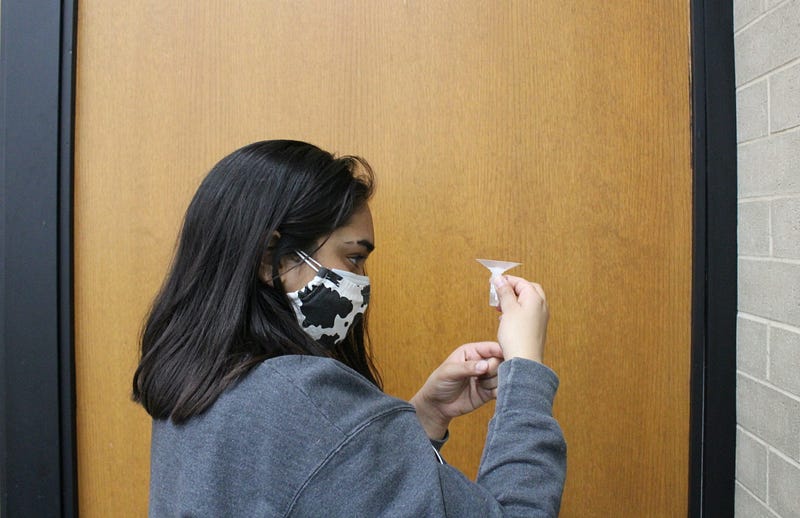
Since the beginning of the spring semester, UW-Madison students living on campus or in the greater Madison area have been testing twice per week for COVID-19. After receiving a negative test result, a green checkmark through the Safer Badgers app gives students access to buildings.
UW-Madison added saliva tests developed by UIUC Researchers to increase the number of tests available to students. For many students, this seemed like a downgrade when comparing the nasal swab tests used during the fall semester. The saliva test requires students to abstain from eating or drinking one hour prior to submitting a sample. The saliva test usually takes longer to complete and can keep lines long during busy hours. Additionally, the saliva test is not any quicker at getting results, as both tests have results available the next day.
However, UW-Madison has expanded its testing as a result of the switch. For the 2021 spring semester, 12 new testing locations were opened. The saliva tests cost around $25 per test, a decrease from the estimated cost of $100 per nasal swab test, which puts less stress on UW-Madison’s estimated $320 million fiscal loss due to the pandemic.
Furthermore, the New England Journal of Medicine finds that saliva tests are slightly more accurate at detecting Covid-19 positivity when compared to nasal swabs. Better yet, a University of South Carolina pharmacologist notes that nasal swabs may yield positive results even when a person is not infectious, which helps UW-Madison students who may have otherwise received a false positive test result stay out of the isolation dorms.
Thanks to the increase in testing, both the student and employee positivity rate has dipped below 0.4 percent for the month of March. During the fall semester, a 2.5 percent positivity rate was seen, along with spikes nearing 10 percent in the middle of September and November. The rapid testing increase will quell any future spikes and help UW-Madison stay on course with the two-month statewide and nationwide decline in COVID-19 cases. Health specialists at UW-Madison will continue to innovate and adapt using the latest technological and medical advancements that provide the utmost safety and accessibility for students and staff. Although students have to watch what they eat before testing and may endure longer lines, the switch to saliva-based testing was an overall improvement.
